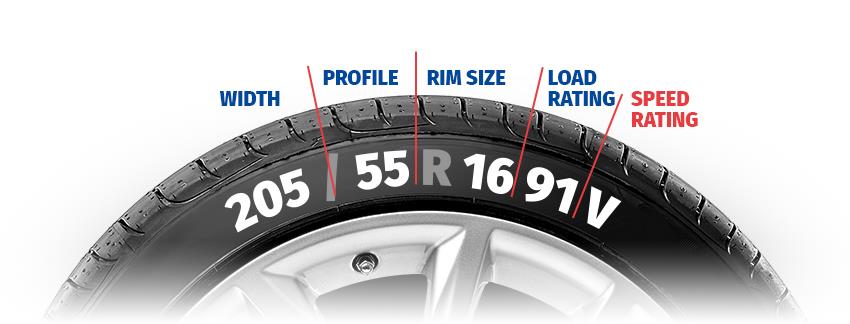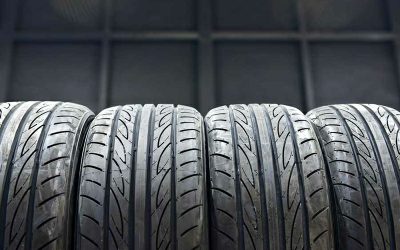Tires are indeed key to the vehicle’s performance. Due to this reason, it is a must to make sure that you get tires that suit your vehicle; otherwise, you can choose to opt for other different-sized products.
Can You Change the Tire Size On The Same Rim?
The answer is YES, but be careful with it. In particular, changing tire size on same rim affects the vehicle’s operation; occasionally, it can lead to unfortunate risks if you do not choose the right replacement model.
There are not too many strict requirements about changing tire width on same rim; you only need to make sure the rim and new tire have the same internal diameter.
That’s why understanding the tire specifications is the most important basis to help you determine if it is a good fit.
How To Read Tire Parameters
Can any tire fit on any car? Of course not. Wheels of each type of vehicle, each version has its magnitude. Thus, only when you know your vehicle’s standard dimension can you choose the most suitable and safest one.
Tire diameter is key when you want to upgrade your wheel dimension, but there are still many other details you should also consider.
Let’s see the meaning of each number and letter in the following order. For example, we have a model with the following parameters: P225/70R16 111W
Service Description Features
Not all models have a service symbol. If any, this sign is usually located on the side of the product (in front of the name). specifically, the meaning of the symbols is as follows:
- P: type for Passenger car
- LT: type for Light Truck
- ST: Special Trailer wheels
- T: type of Temporary replacement one
- C: type for Commercial vehicles, heavy-duty trucks
In this example, our product has the letter P, which is typically only for passenger vehicles, including passenger cars, minivans, SUVs, and other pickup trucks.
Width And Profile
When observing car tires, you will immediately see the following parameters:
Width is a series of letters and numbers placed after the service specification, with a slash. The first three numbers are the tire width, in mm; this value ranges from 155 to 315.
Its profile is the two numbers following the width and following the slash. This is the aspect ratio of the tire sidewall height to the tread width.
So, based on the example, the wider tire widths of this model are 225 tire profiles of 70%.
Structure

Usually, the letter R located after its profile indicates its structural parameter. The letter R stands for radial steel construction – one of the industry standards for passenger cars.
When looking at other vehicles, you may glimpse the letters B, D, or E
Wheel Diameter
The car tire parameter shows the rim diameter right after the R structure. The technician will determine the right one based on this magnitude during the replacement process.
As an example, the rim size of this version has a value of 16.
Maximum Allowable Load Rating
This parameter indicates the load capacity of the product; the larger the value, the higher the tyre’s load.
You should note that never replace the original equipment with a maximum allowable load index lower than this parameter, only use products of the same or higher. This will guarantee that the tires can withstand the maximum heavy loads when operating.
For example, with a maximum load of 111, only a tire with an index of 111 or higher should be used when you want to use a different tire size on same rim.
Advantages Of Changing The Tire Size
If you switch to a larger tire with the original diameter of tire manufacturers, your car will go further before the tire completes its full rotation. This is an ideal fuel economy method.
For vehicles that use occasional, low-production, or expensive tires, changing to a more common type will save you a great deal of money. Not only that, but this is also a terrific way if you want to change the wheel setups of your four-wheeled friend.
Disadvantages Of Resizing Tires
Large model dimensions also have certain disadvantages, as they can bring potential risks to the steering system and handling systems if you do not choose the right magnitude for the old wheel rim.
Tires that are too large are easy to touch the fenders during sharp turns or touch many other details on the vehicle, causing damage. In addition, this means that the car has to carry a larger amount of vapor from 20-35%, which increases the specific gravity significantly.
The enlargement in wheel size in both diameter and width makes all parameters of the speed reader calculated by the manufacturer incorrect. Some circumstances will easily lead to a violation of the speed that the vehicle owner never knew.
The large product dimension also has some disadvantages, such as causing the car to be inert when hastened, and rear wheels are easy to side-wear.
It can affect rolling resistance, wet roads, and rough terrain. Even directly touching the chain, causing the chain to slip very dangerously when the car is running fast.
Oversized types also make the car prone to dangerous slips in many situations. Some cars with oversized tires look very ugly and cause a loss of aesthetics.
Thus, the same rim different tire size method only ensures a comfortable ride if it does not exceed 3% of the overall diameter of the original tire on the vehicle.
Conclusion
Overall, resizing is possible, but make sure its internal diameter fits the wheel rim for safety. Don’t be too greedy for oversized ones.
Hope this article will help you in the process of wheel upgrades. Thanks for reading.








